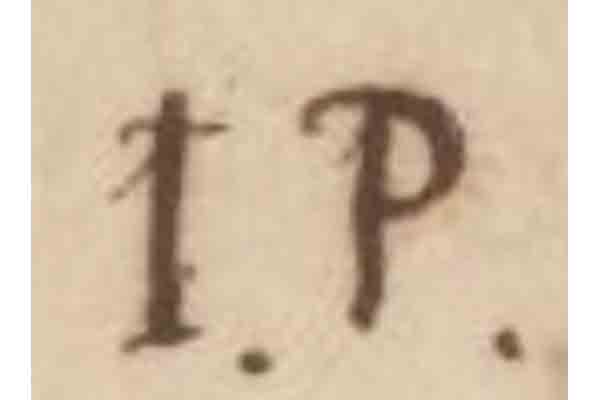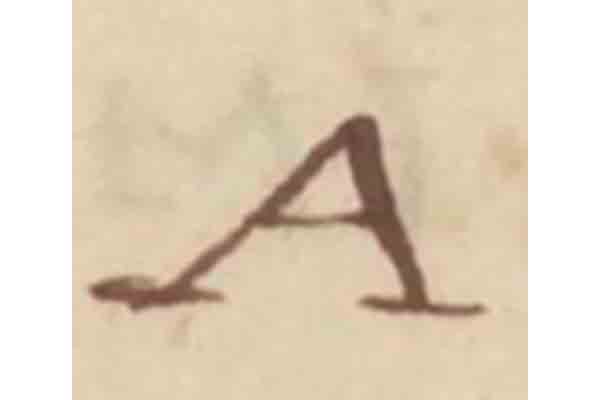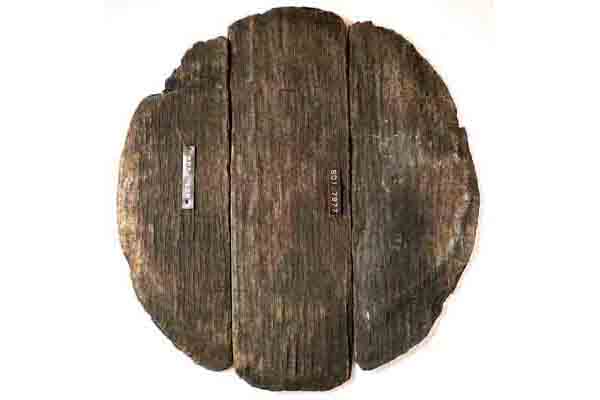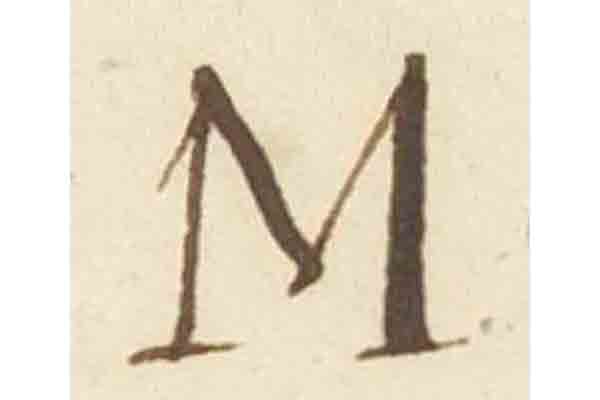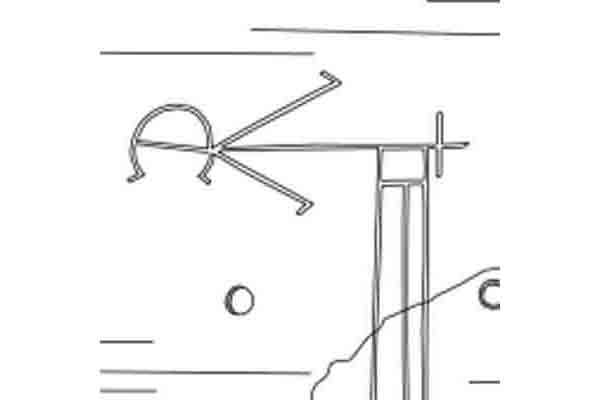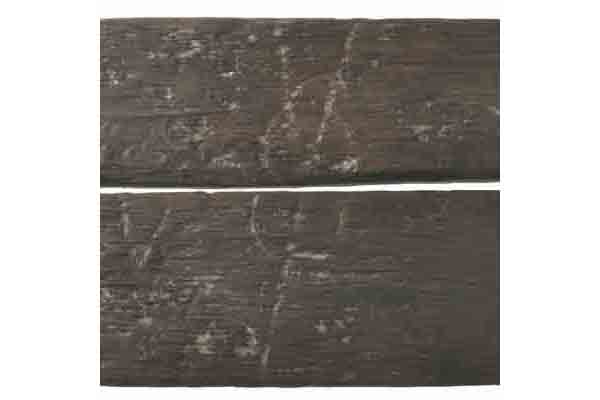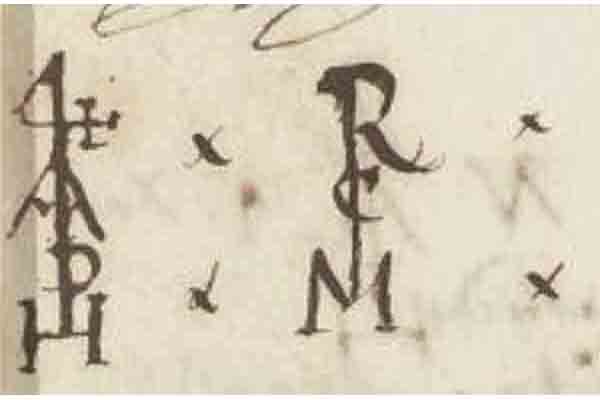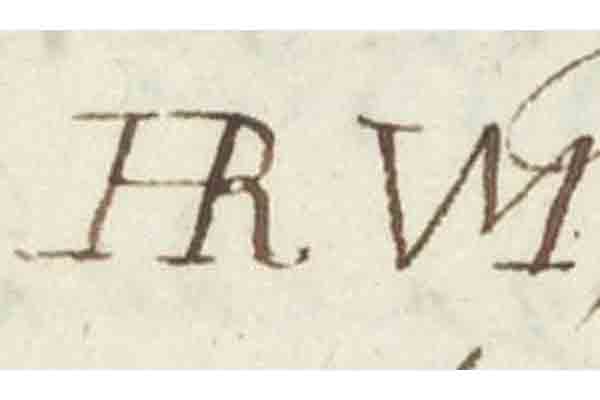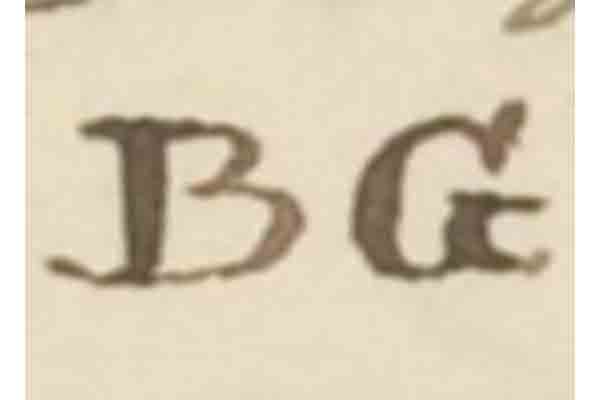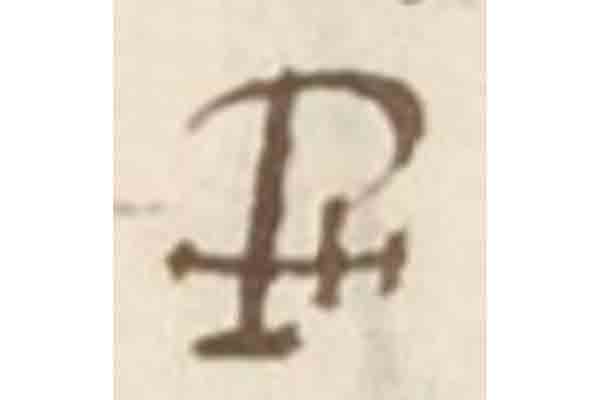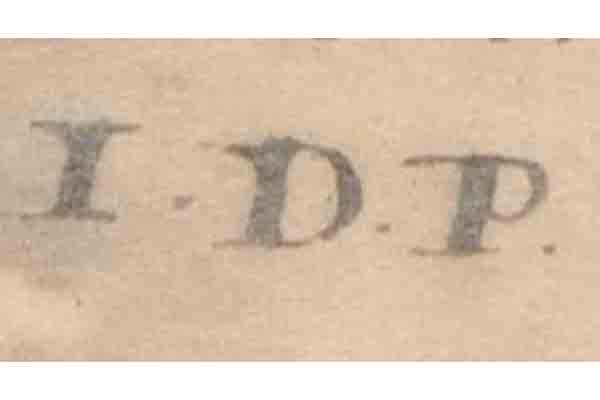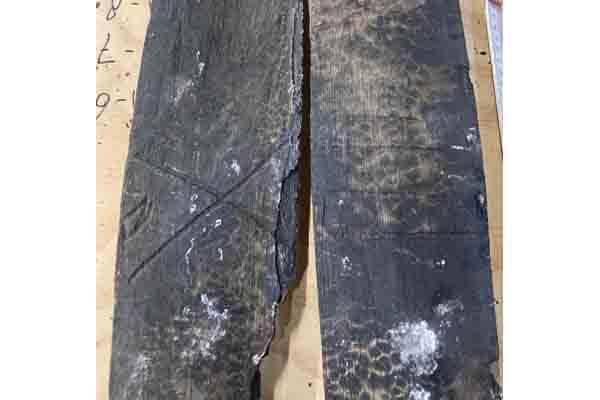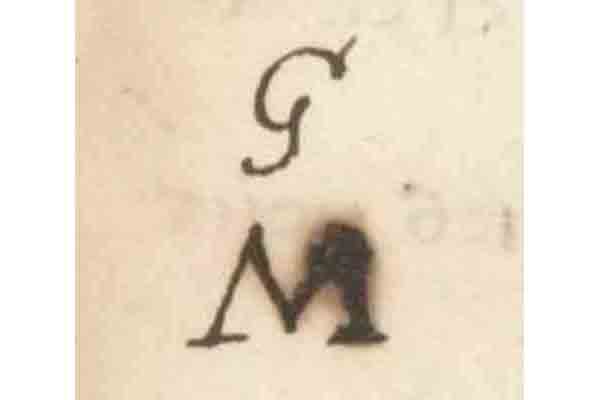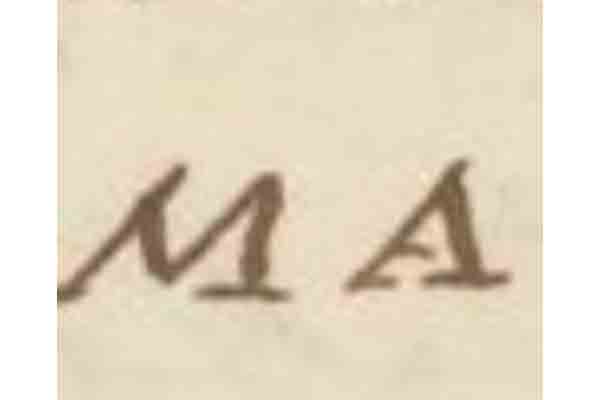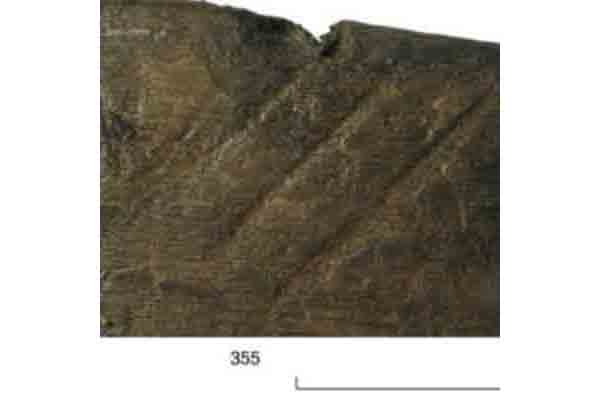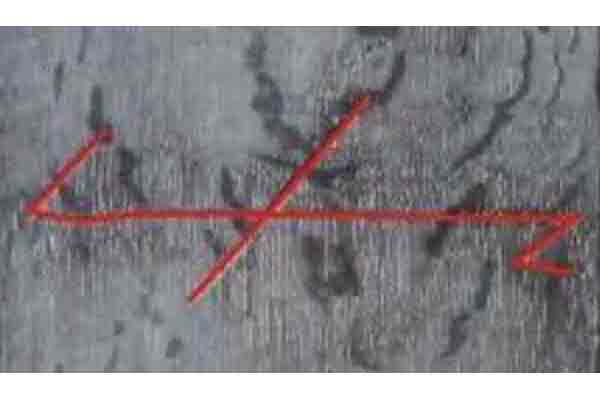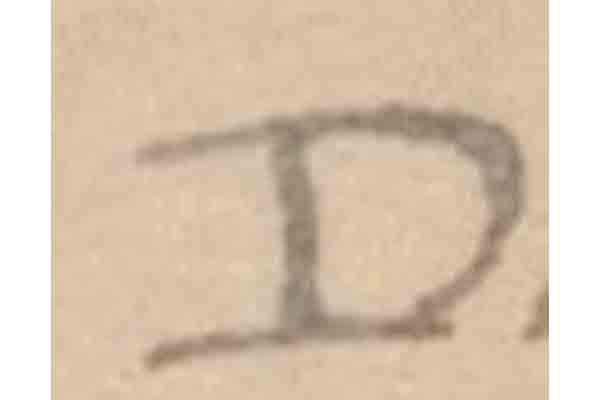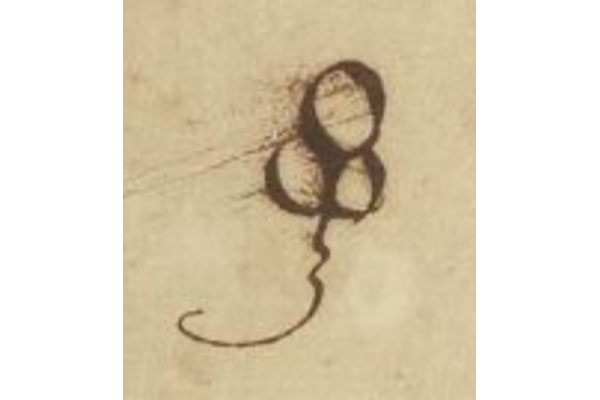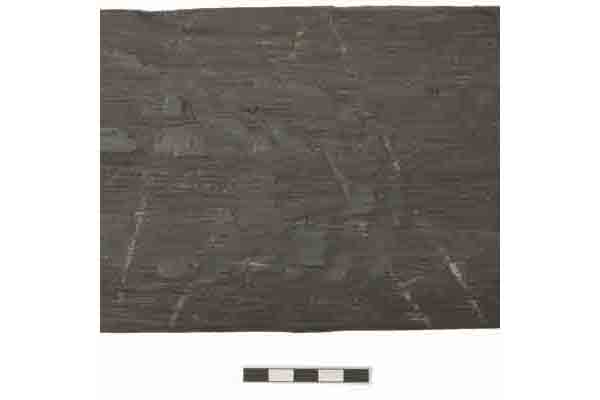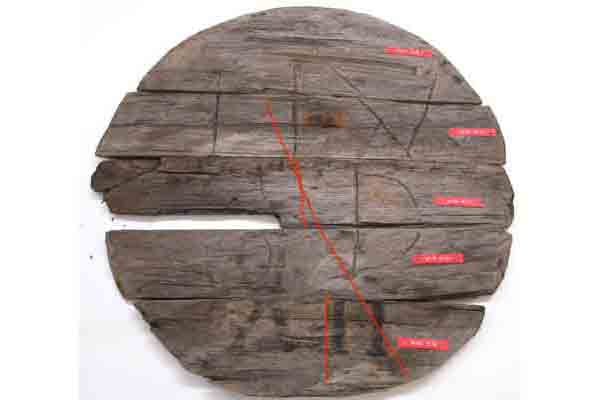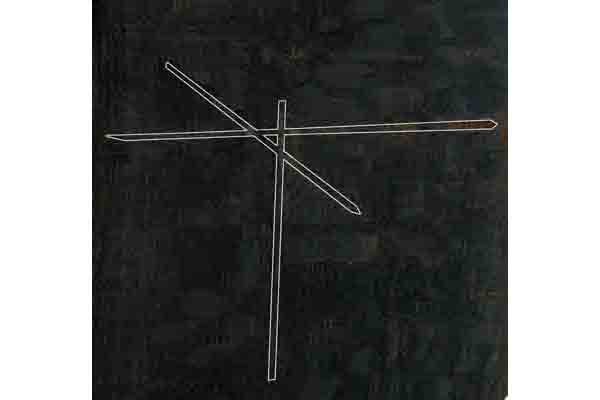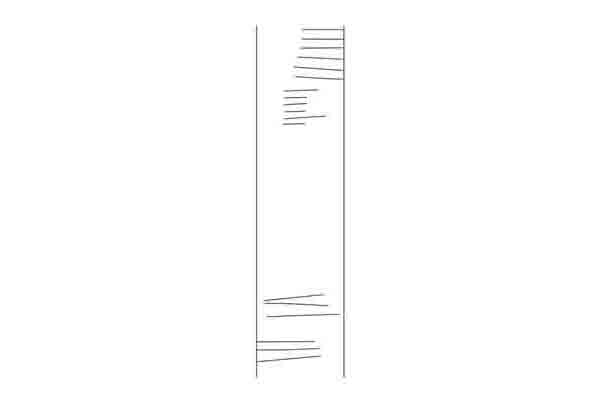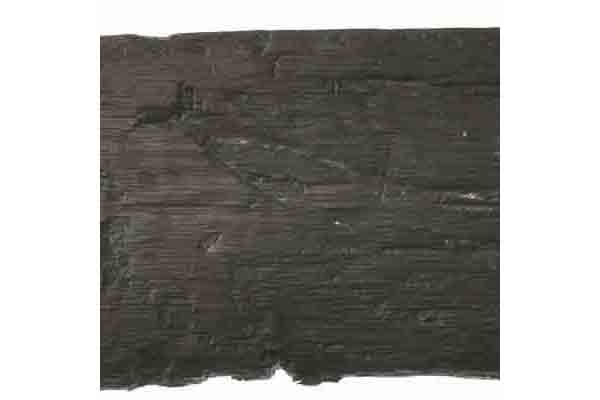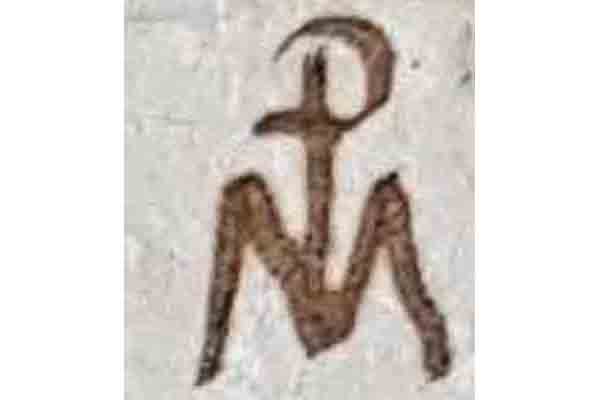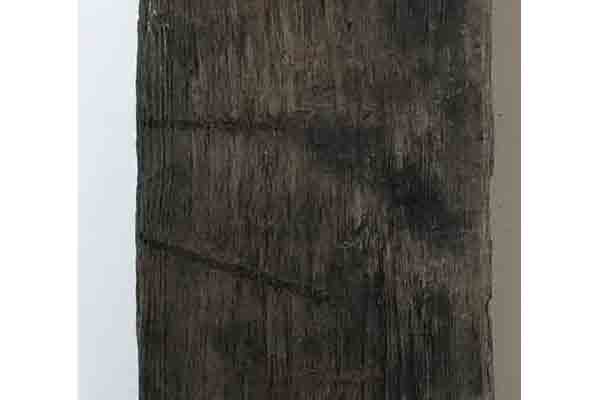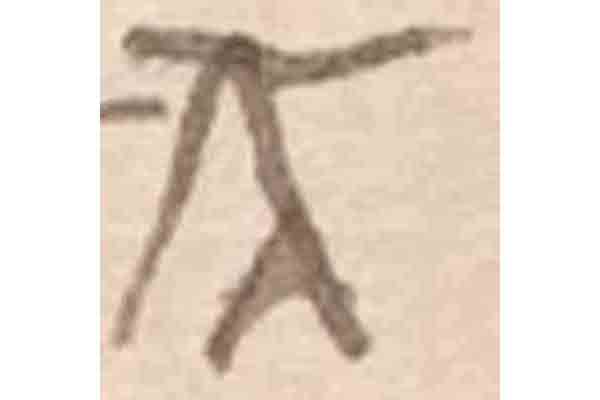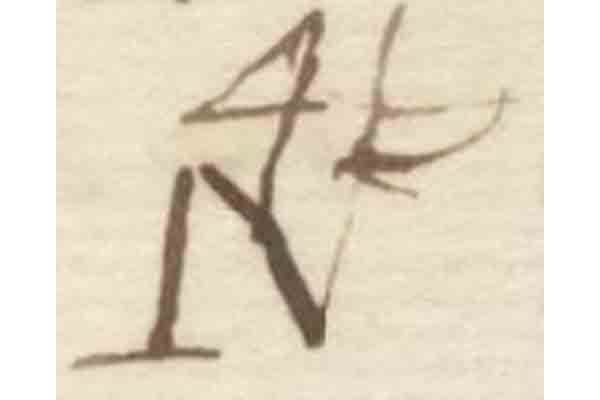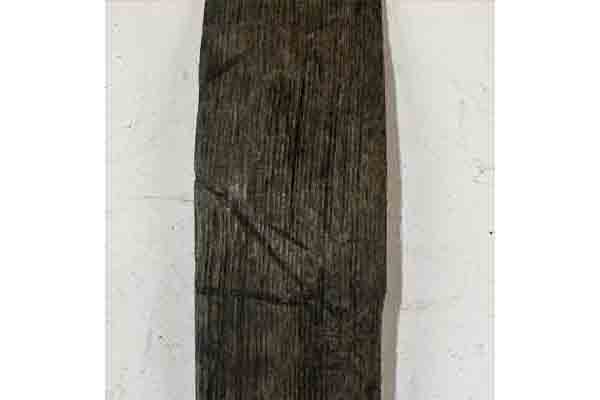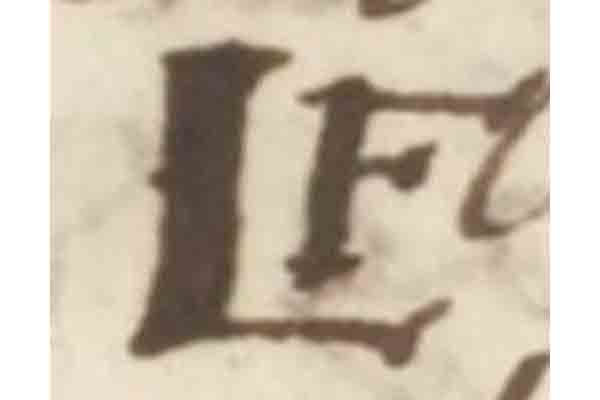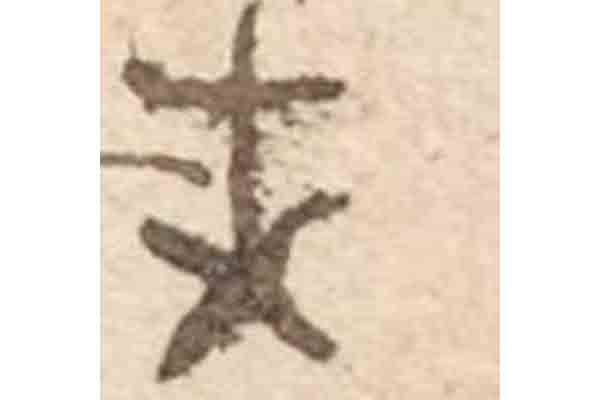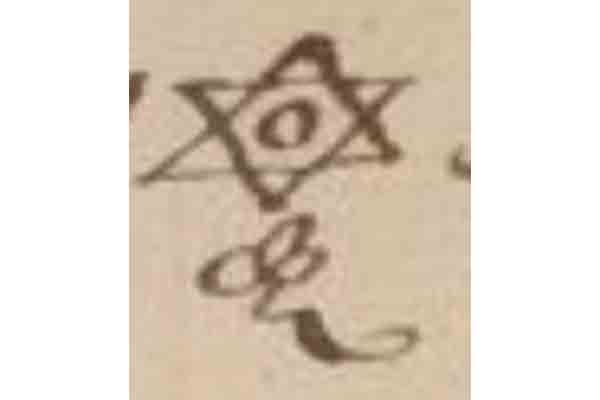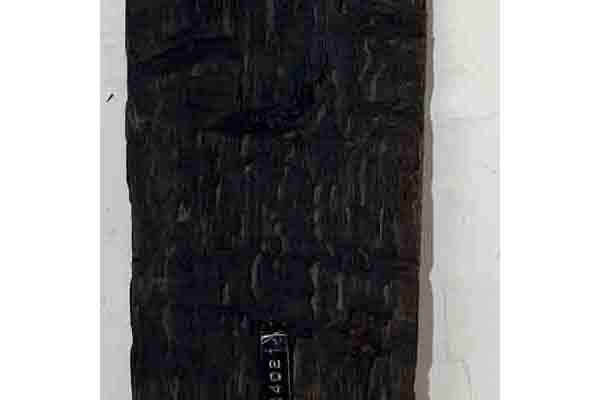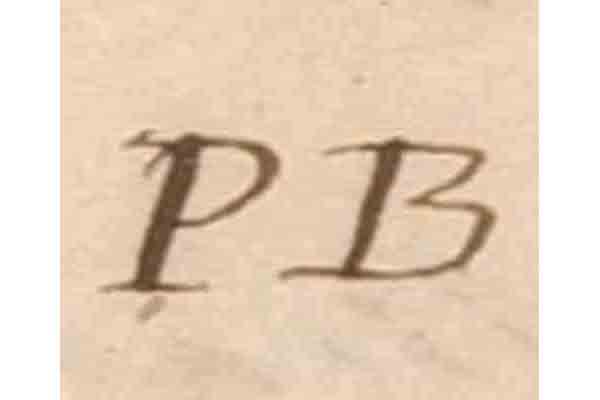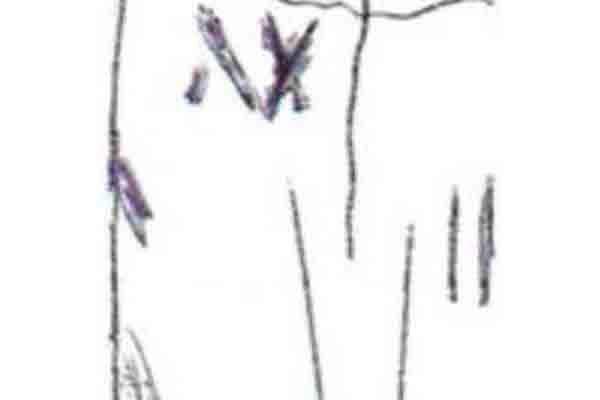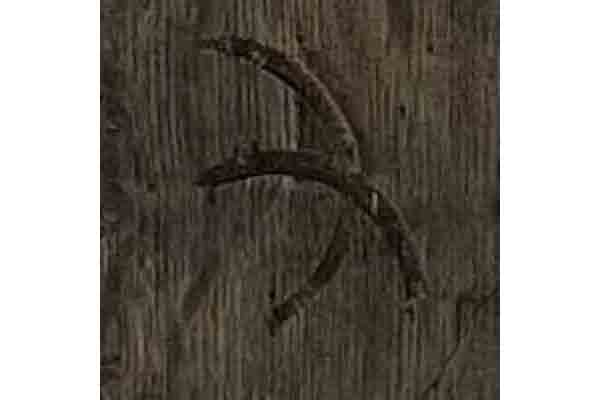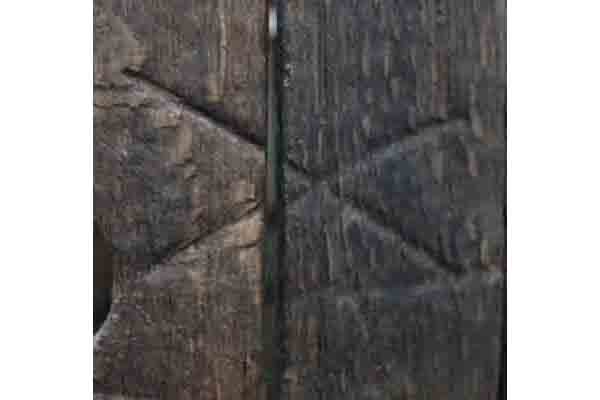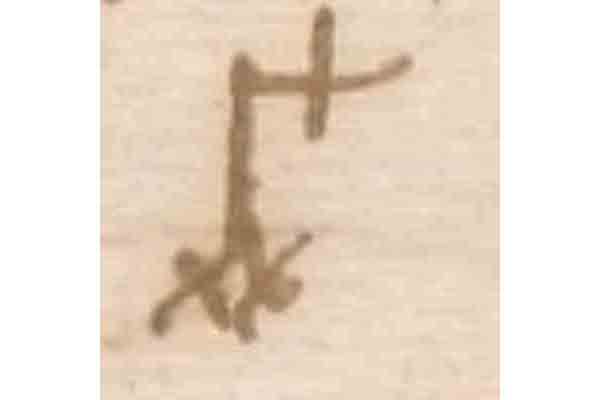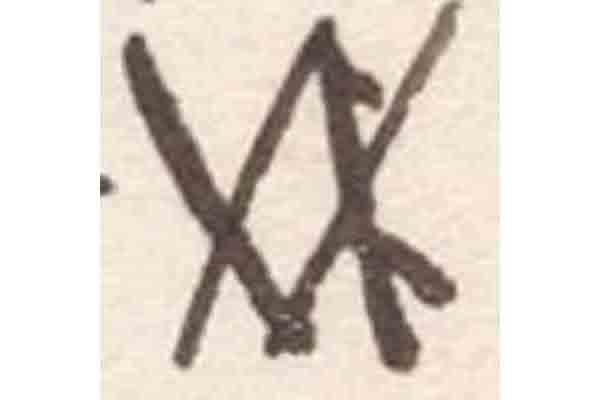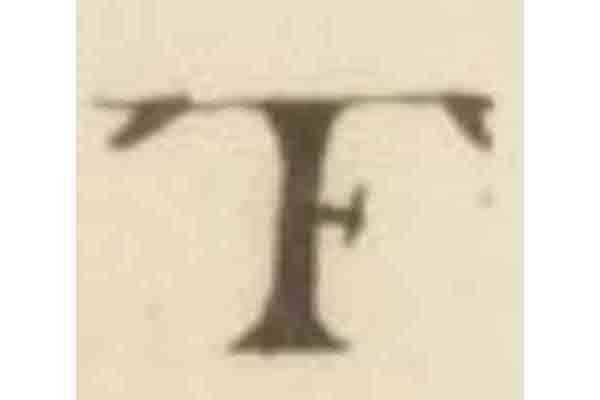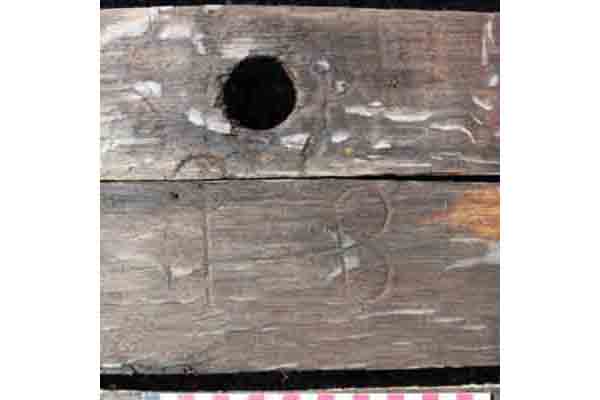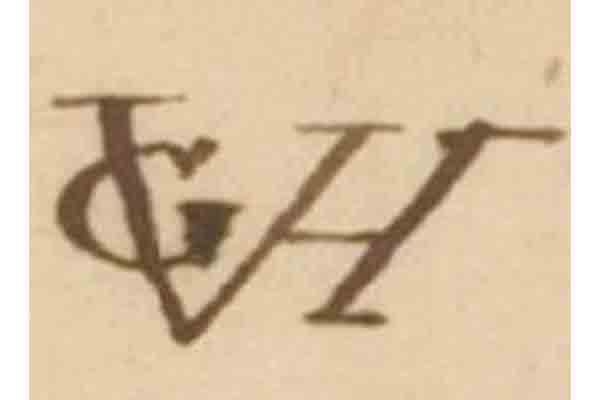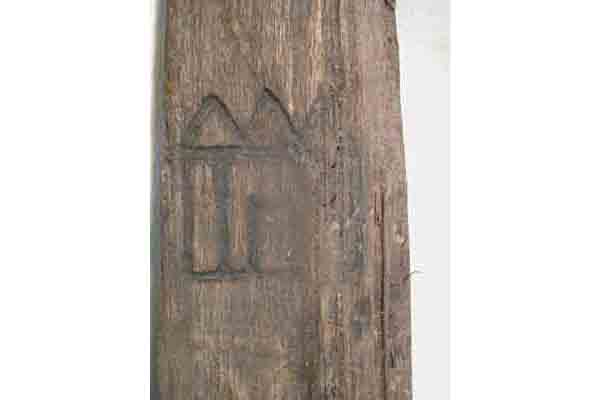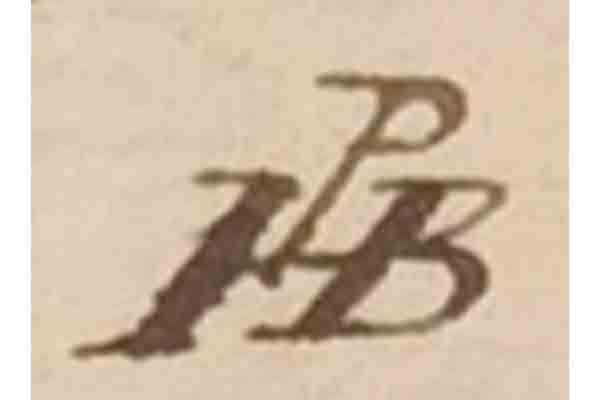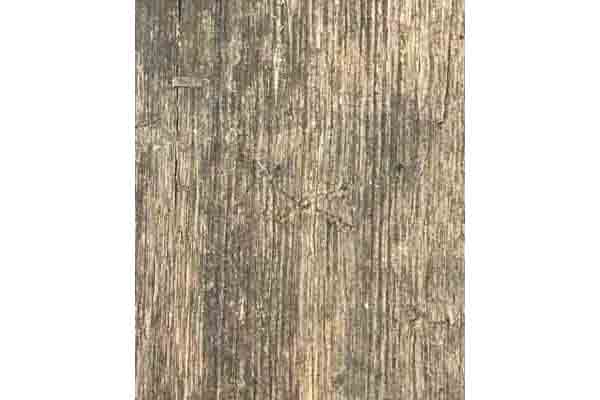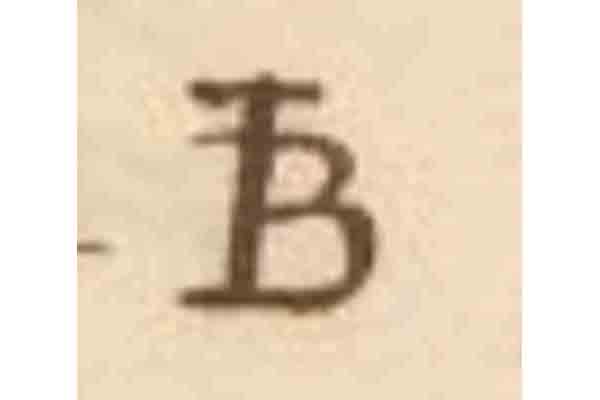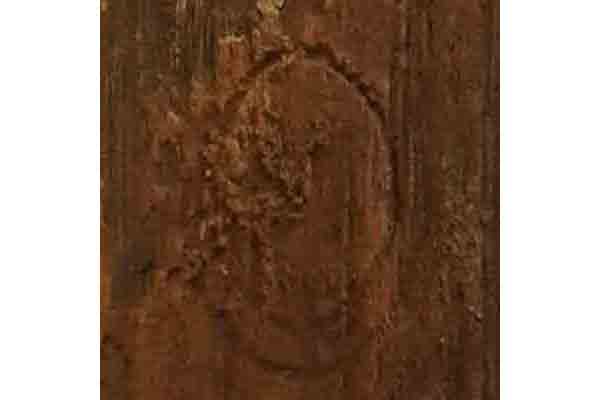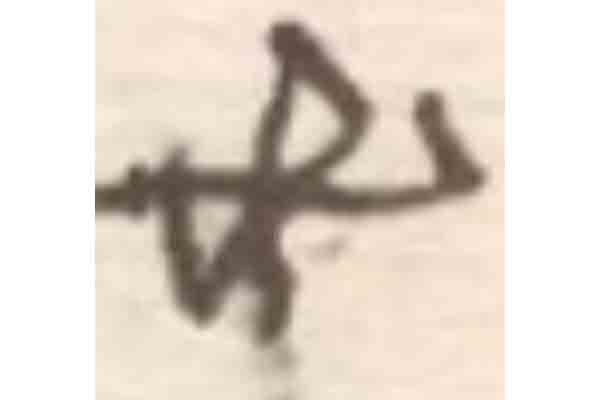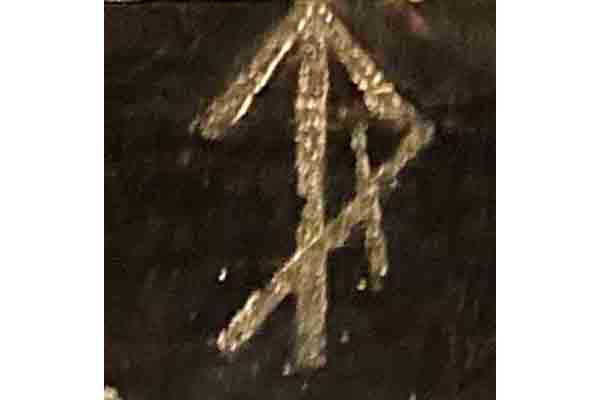Manual
Search Options
WOODAN Caskmarks has been set up to provide an overview of marks on casks and to enable specific searches for particular marks on casks using their associated specifications. A description of the fields is provided under the heading "Description of the fields". You can search by characteristics of the mark, the date of the mark or the design of the mark.
Characteristics of the mark:
- ID Cask mark (Id number of a specific cask mark)
- Town (in which the mark was found)
- Associated product
- Dry goods: food
- Dry goods: merchandise
- Wet goods: Alcoholics
- Wet goods: drinks
- Wet goods: foodstuffs
- Mark location on cask
- Head: inside
- Head: outside
- Bilge bottom
- Bilge center
- Bilge center near hole
- Unknown
- Does not apply
- Type of mark
- Construction Marks
- Count mark
- Property mark
- Gauge mark
- Unknown type
- Context type
- Maritime
- Urban
- Archival source
- Countryside
- Method of application
- Timber scribe
- Knife
- Branding iron
- Compass
- Painted mark
- Ink
- Strike mark
- Timber scribe or knife
- Unknown
The date of the mark:
- Startdate and enddate of context
- Startdate and enddate of dendrochronological analyses
The design of the mark:
Each mark can be divided into specific elements. These elements can be entered separately into a search field, allowing for easy searching of similarly designed marks. For instance, a hashtag symbol (#) can be searched for by entering “2” in the field Horizontal stripes and “2” in the field Vertical stripes. The search field options are: Horizontal stripes, Vertical stripes, Diagonal stipes, Waving lines, Circles, Half Circles, Dots, Crosses, Numbers, Figures, V-Shapes, W-Shapes and Letters.
Description of cask mark types
To understand the use and significance of these marks, several types of cask marks were distinguished. These types are categorized based on their intended purpose. The marks served various functions, ranging from quantification and indicating ownership to the gauge or production process. The following types of cask marks have been distinguished:
Construction mark
The construction marks were applied during the production phase or repair of the casks by the cooper (Fig. 1). These marks are found on the bilge or heads of a cask and are usually of a relatively simple design. By marking lines when laying out the staves or head parts, it becomes easy to return a component to its correct place. This type of marking was often made with a knife, though in some cases, a timber scribe was used.

Figure1: An example of a V shaped construction mark on a head (ID0428).
Count mark
The count was used to quantify casks or the load they carried (Fig. 2). The design of this cask mark type consists of a system of lines and cross lines. The combination of these lines indicates a number. The count marks are usually applied with either a knife of timber scribe on the bilge of exterior of a head.

Figure 2: An example of a count mark on a stave (ID0777).
Gauge mark
The gauge mark served to show that an independent party had verified the prescribed specifications of the cask, the volume of the content or the correct handling of the contents of the cask. This cask mark type was mostly applied with a timber scribe on the bilge near the bung hole.
The design of the gauge mark varies depending on the transported product. For instance, wine gaugers marks were detailed because the amount of wine in the barrel was indicated in the gauge mark (Fig. 3_1). For herring casks, the gauge marks could consist of a series of circles (Fig. 3_2). When inspecting the specifications of the barrel as packaging material, a mark from the inspector or the city where the gauging process was carried out was usually placed on the barrel (Fig. 3_3).

Figure 3: Three examples of gauge marks, 1: wine gauge mark (ID0340), 2: gauge mark on herring cask (ID0584), 3: gauge mark of the city of Leiden (ID0417).
Property mark: Coopers' mark
This mark is applied by the cooper after the cask's production process is complete. It serves to quantify the cooper's production and to trace the producer in case of a poorly made cask. The coopers’ mark was applied using either a timber scribe or, in some cases, with a knife. This cask mark type, is placed on the inside or outside of the heads of bilge (Fig. 4). The design is consists of a monogram or simple combination of lines or circles.

Figure 4: A coopers’ mark on the inside of head (ID0641).
Property mark: Merchants mark
The merchants’ mark was applied by the producers of the packaged merchandise or the intermediary who traded them. This type of mark was usually applied with a timber scribe and was placed on the outside of the head or bilge. The design of the merchant's marks was often linked to the merchant, as they typically included a monogram made from the merchant's initials. This cask mark type was applied with a timber scribe, branding iron, strike mark or paint.
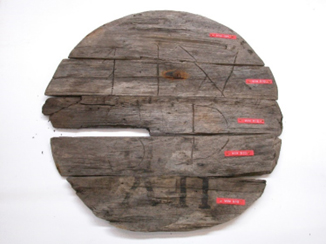
Figure 5: An example merchants marks on a head applied with a timber scribe and paint (ID0144).
Property mark: Other mark
Property marks that cannot be interpreted as merchant's mark or cooper's mark fall into the category of "Other Property Marks." This category includes marks that can be linked to a producing organization, such as a brewery (Fig. 5). This cask mark type was placed on the outside of the head or bilge using timber scribe, branding iron, strike mark or paint. The design of the mark varies greatly.

Figure 6: An example of a painted property mark of a brewery (ID0392).
Description of the tabs
Images
This is the homepage where you can find search fields for the characteristics, date, or design of the mark. The search results will display an image of the mark along with its type and the ID number of the cask mark.
By clicking on any individual cask mark, you can select it. Upon selection, you will be directed to a page displaying all the available information for that particular mark. Often, not every field will have data. By using the ‘Show empty fields’ option, you can choose to display these fields or keep them hidden.
Tables
The table tab displays the search results in a tabular format. By default, the table shows the ID number, image, type of cask mark, location of the mark on the cask, method of application, and the municipality where the mark was found. The search field at the top of this tab allows you to search across all available fields in the database, so also fields that aren’t shown in the table tab display.
Maps
The maps tab displays the search results on a map, with each icon representing an individual cask mark. It is advisable to zoom in closely, as many of the cask marks were found in close proximity, causing the icons to often overlap.
How to add new marks
New marks can be added to WOODAN Cask marks by completing the input file downloadable from this link. This file can be sent to WOODAN by email. These data will be verified by one of the involved researchers to ensure the reliability of the information in WOODAN Cask marks. After this verification, the data will be made available online.
Colophon
The development of Woodan Caskmarks has been supported by a grant from the Samenwerkende Maritieme Fondsen.
WOODAN Cask marks is connected to the article: Oosterbaan, J. (in preparation). Marks on Casks.
The database model was made by Jeroen Oosterbaan. Data entry was done by Liam Tran, Wouter Donders and Jeroen Oosterbaan.
Description of the fields
All fields of WOODAN Cask marks are listed in the table below, along with their descriptions, possible options, and field types.
| Field name | Field type | Options | Dutch translation | Remark | Field shown in Home tab | Field shown in Tables tab |
|---|---|---|---|---|---|---|
| Cask mark type | Drop-down list | Type tonmerk | x | x | ||
| Construction mark | Constructiemerk | |||||
| Count mark | Telmerk | |||||
| Property mark: Coopers' mark | Eigendomsmerk: Kuipersmerk | |||||
| Property mark: Merchants' mark | Eigendomsmerk: Handelaarsmerk | |||||
| Property mark: Other mark | Eigendomsmerk: Overig | |||||
| Gauge mark | IJkmerk | |||||
| Unknown type | Onbekend type | |||||
| Unknown / not filled in | Onbekend / niet ingevuld | |||||
| ID-Cask mark | Numeric, integer | x | x | |||
| Mark location on cask | Drop-down list | Locatie van tonmerk (op de ton) | x | x | ||
| Head: inside | Bodem: binnenkant | |||||
| Head: outside | Bodem: Buitenkant | |||||
| Bilge bottom | Buik onderkant | |||||
| Bilge center | Buik centraal | |||||
| Bilge center near hole | Buikcentraal bij gat | |||||
| Unknown | Onbekend | |||||
| Does not apply | Niet van toepassing | Example: marks from archival sources | ||||
| Method of application | Drop-down list | Wijze van aanbrengen | x | x | ||
| Timber Scribe | Ritsmes | |||||
| Knife | Mes | |||||
| Branding iron | Brandmerk | |||||
| Compass | Passer | |||||
| Painted mark | Geschilderd merk | |||||
| Ink | Inkt | |||||
| Timber scribe or knife | Ritsmes of mes | When not clear if the mark was placed by eigther a timber scribe or knife | ||||
| Strike mark | Slagstempel | |||||
| Unknown | Onbekend | |||||
| Mark over number of staves | Numeric, integer | Over aantal duigen | ||||
| Height (mm) | Numeric, integer | Hoogte (mm) | Length of the mark measured along the length of the stave | |||
| Width (mm) | Numeric, integer | Breedte (mm) | Width of the mark measured along the width of the stave | |||
| Complete cask mark? | Yes / No | Compleet merkteken? | ||||
| Context (project name) | Text | Naam onderzoek | ||||
| Context type | Drop-down list | Context type | x | x | ||
| Maritime | Maritiem | |||||
| Urban | Stadskern | |||||
| Archival source | Archiefbron | |||||
| Countryside | Buitengebied | |||||
| Unknown | Onbekend | |||||
| Town | Text | Plaats | x | x | ||
| LongRDX | Numeric, integer | Coördinaat (Longitude, lengtegraad) | ||||
| LatRDY | Numeric, integer | Coördinaat (Latitude, breedtegraad) | ||||
| Data controller | Text | Data controller | Name of the person who checked or entered the data | |||
| Associated product | Drop-down list | Geassocieerd vervoerd product | x | x | ||
| Dry goods, Food, Other food | Droge waar, Etenswaar, Etenswaar overig | |||||
| Dry goods, Food, Cereals | Droge Waar, Etenswaar, Granen | |||||
| Dry goods, Food, Vegetable | Droge waar, Etenswaar, Groente | |||||
| Dry goods, Food, Herring | Droge waar, Etenswaar, Haring | |||||
| Dry goods, Food, Nuts | Droge waar, Etenswaar, Noten | |||||
| Dry goods, Food, Oil | Droge waar, Etenswaar, Olie | |||||
| Dry goods, Food, Spice | Droge waar, Etenswaar, Specerij | |||||
| Dry goods, Food, Fish other | Droge waar, Etenswaar, Vis overig | |||||
| Dry goods, Food, Meat | Droge waar, Etenswaar, Vlees | |||||
| Dry goods, Food, Fruit | Droge waar, Etenswaar, Vrucht | |||||
| Dry goods, Food, Mollusc | Droge waar, Etenswaar, Weekdieren | |||||
| Dry goods, Food, Seeds | Droge waar, Etenswaar, Zaden | |||||
| Dry goods, Food, Salmon | Droge waar, Etenswaar, Zalm | |||||
| Dry goods, Food, Dairy food | Droge waar, Etenswaar, Zuivelproduct | |||||
| Dry goods, Merchandise, Fuel | Droge waar, Handelswaar, Brandstof | |||||
| Dry goods, Merchandise, Other raw material | Droge waar, Handelswaar, Grondstof overig | |||||
| Dry goods, Merchandise, Other merchandise | Droge waar, Handelswaar, Handelswaar overig | |||||
| Dry goods, Merchandise, Gunpowder | Droge waar, Handelswaar, Kruit | |||||
| Dry goods, Merchandise, Cloth | Droge waar, Handelswaar, Laken | |||||
| Dry goods, Merchandise, Metals | Droge waar, Handelswaar, Metalen | |||||
| Dry goods, Merchandise, Stone | Droge waar, Handelswaar, Natuursteen | |||||
| Dry goods, Merchandise, Pitch | Droge waar, Handelswaar, Pek | |||||
| Dry goods, Merchandise, Tobacco | Droge waar, Handelswaar, Tabak | |||||
| Dry goods, Merchandise, Tar | Droge waar, Handelswaar, Teer | |||||
| Dry goods, Merchandise, Soap | Droge waar, Handelswaar, Zeep | |||||
| Wet goods, Alcoholics, Beer | Natte waar, Alcoholische dranken, Bier | |||||
| Wet goods, Alcoholics, Other distilled drinks | Natte waar, Alcoholische dranken, Gedestilleerd overig | |||||
| Wet goods, Alcoholics, Mead | Natte waar, Alcoholische dranken, Mede | |||||
| Wet goods, Alcoholics, Wine | Natte waar, Alcoholische dranken, Wijn | |||||
| Wet goods, Drinks, Water | Natte waar, Dranken, Water | |||||
| Wet goods, Foodstuffs, Vinegar | Natte waar, Etenswaar, Azijn | |||||
| Wet goods, Foodstuffs, Other foodstuffs | Natte waar, Etenswaar, Etenswaar overig | |||||
| Wet goods, Foodstuffs, Dairy product | Natte waar, Etenswaar, Zuivelproduct | |||||
| Wet goods, Textile industry, Other | Natte waar, Textielindustie, Overig | |||||
| Tranche ID | Numeric, integer | Werkputnummer | ||||
| Feature ID | Numeric, integer | Spoornummer | ||||
| Find ID | Numeric, integer | Vondstnummer | ||||
| WOODAN ID | Numeric, integer | WOODAN ID | Link to WOODAN site | |||
| Archis ID | Numeric, integer | Archis-nummer | ||||
| Date context start | Numeric, integer | Datering context, start | x | |||
| Date context end | Numeric, integer | Datering context, einde | x | |||
| Date history start | Numeric, integer | Datering archiefbron, start | ||||
| Date history end | Numeric, integer | Datering archiefbron, einde | ||||
| Date dendro start | Numeric, integer | Datering dendro, start | x | |||
| Date dendro end | Numeric, integer | Datering dendro, einde | x | |||
| Provenance | Drop-down list | Herkomst hout | ||||
| Rhineland | Rijnland | |||||
| Meuse valley / Germany | Maasvallei / Duitsland | |||||
| North German plane | Noord-Duitse Laagvlakte | |||||
| Poland | Polen | |||||
| Baltic region | Balticum | |||||
| Southern Scandinavia | Zuid-Scandinavië | |||||
| England | Engeland | |||||
| France | Frankrijk | |||||
| France, Loire valley | Frankrijk, Loirevallei | |||||
| France, Burgundy | Frankrijk, Bourgogne | |||||
| Liechtenstein | Liechtenstein | |||||
| Tropical hardwood | Tropisch hardhout | |||||
| Eastern Poland / Belarus | Oost-Polen / Wit-Rusland | |||||
| Belgium | België | |||||
| Unclear | Onduidelijk | |||||
| Not determined | Niet bepaald | |||||
| Sapwood | Yes / No | Spinthout aanwezig? | ||||
| Dendrochronological quality | Numeric, integer | Kwaliteit dendrochronologie | ||||
| Number of tree-rings | Numeric, integer | Aantal jaarringen |
You can download the manual here
